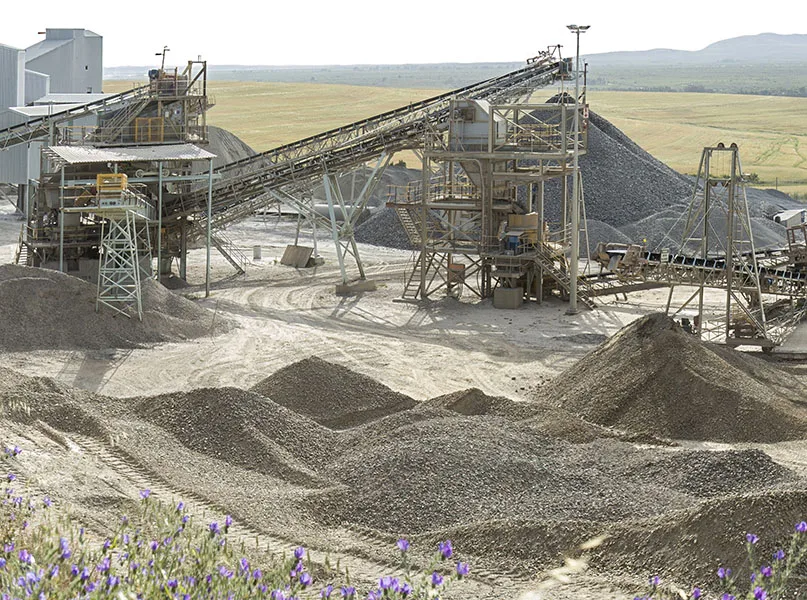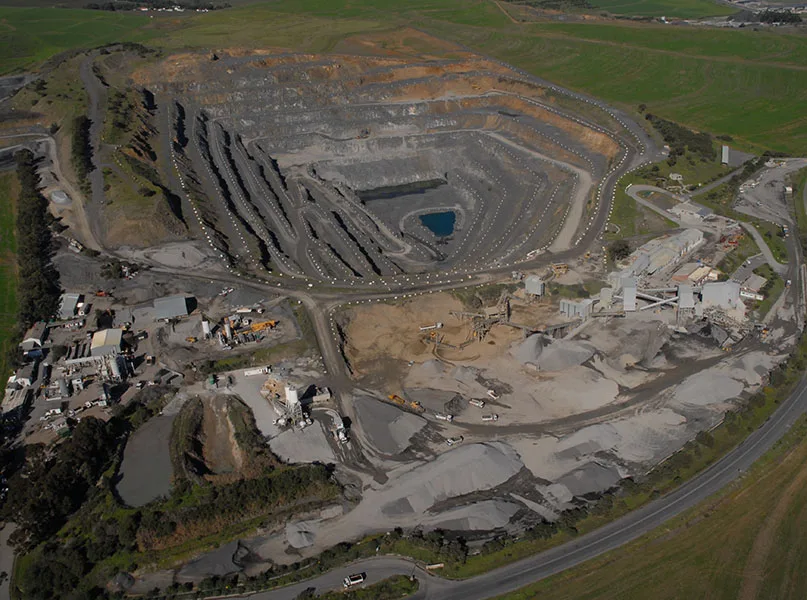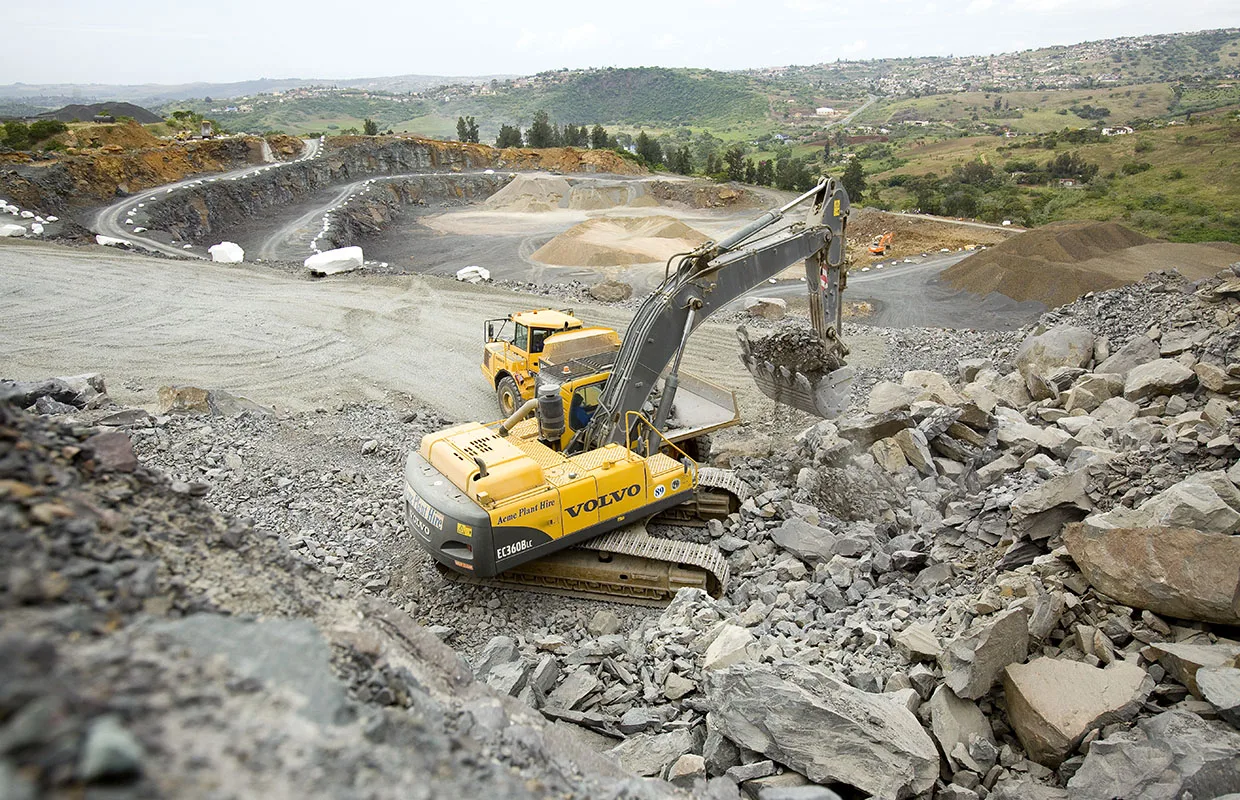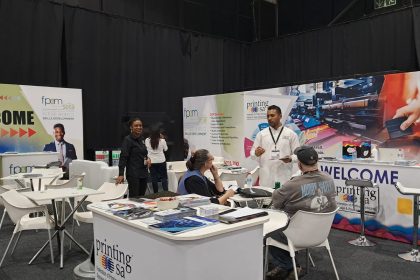Striving for sustained growth in the face of ongoing adversity, South Africa’s small surface mining and quarrying sector is calling for more accessible legislation with a view to bolstering emerging business.
SPOTLIGHT ON SOUTH AFRICAN QUARRYING
Due to its abundance of natural resources, well-established mining infrastructure, and longstanding status as a key exporter of metals and minerals, the South African mining industry continues to thrive.
Historically, the majority of its output has been attributed to larger mines, often controlled by multinational conglomerates. Today, however, small surface mines and quarries are also playing a growing role.
Supported by mining legislation from the Department of Mineral Petroleum Resources (DMPR), small surface mining involves employing mechanised and semi-mechanised technologies to reach small deposits of mineral ore available at shallow depths.
South African quarrying, meanwhile, leverages the region’s natural stone resources and significant clay deposits to extract stone, clay, sand, and aggregates essential to the country’s construction and manufacturing sectors and is a major contributor to the economy.
Both small surface mining and quarrying have been identified as important areas of development by DMPR for their contributions to socioeconomic growth, job creation, and poverty alleviation.
In addition, the promotion of safe, legal quarrying and mineral exploration that pays heed to the relevant health, safety, and environment (HSE) practices, alongside taxations and royalties, has become an important focus for key industry players.
However, challenges have arisen as the very real threat of illegal mining in South Africa (SA) looms, in which derelict and ownerless (D&O) mines and quarries, often with extremely dangerous conditions, are being exploited through non-approved methods.
Illegal miners are also selling their product at very low prices due to the absence of compliance measures, regulation, and taxation, which can lead to legal small and artisanal mining companies struggling to compete.
As such, SA’s small surface mining and quarrying industry is shrinking, compounded by high regulatory and legislative barriers, which have led to industry bodies such as ASPASA, the Institute of Quarrying Southern Africa (IQSA), and DMPR working to actively reverse this.
Less restrictive and more accessible legislation surrounding small surface mining and quarrying is therefore being called for, allowing new entrants, including micro, small, and medium-sized enterprises (MSMEs), to flourish.

Q&A WITH LETISHA VAN DEN BERG, DIRECTOR, ASPASA
We sit down with Letisha van den Berg, Director of the surface mining industry association, ASPASA – formerly known as the Aggregate and Sand Producers Association of Southern Africa – who outlines the organisation’s crucial role in advocating for SA’s small surface mining and quarrying industry, its close partnership with IQSA, and their united goal to promote and develop the sector.
Firstly, please could you introduce us to ASPASA?
Letisha van den Berg, Director (LvdB): ASPASA is a non-profit organisation that advocates for the small surface mining industry. We work alongside various industry bodies and government agencies to influence leading practices, develop standards, and shape legislation that aligns with the unique needs of small surface mines.
The organisation actively liaises with industry bodies such as IQSA, DMRE, the Minerals Council of South Africa (MINCOSA), the Mine Health and Safety Council (MHSC), the South African Diamond Producers Organisation (SADPO), the South African National Roads Agency SOC Limited (SANRAL), the Southern African Bitumen Association (Sabita), and Construction Alliance South Africa (CASA) to promote the interests of our members.
We use our collective voice to ensure that the concerns and requirements of small surface mines are considered when drafting and implementing regulations and standards.
One of ASPASA’s key roles is to provide guidance on environmental and safety protocols, permit requirements, and training programmes. We help our members navigate the complex legislative landscape by offering clear and practical advice on compliance requirements. This ensures that small surface mines can operate safely, responsibly, and in full compliance with regulations.
ASPASA also plays a vital role in reducing the risk of accidents and environmental harm within the industry. We conduct audit processes to assess the compliance and safety practices of our members, identifying areas for improvement and providing actionable recommendations.
The association also serves as a networking platform for small surface mines and the broader supply chain. By bringing together various stakeholders, ASPASA facilitates collaboration, knowledge sharing, and business opportunities. This helps small surface mines to connect with suppliers, contractors, and other industry professionals, fostering relationships that can contribute to the growth and success of their operations.
Furthermore, ASPASA is dedicated to developing young industry members in association with IQSA. We provide training programmes and opportunities for professional development, empowering new and emerging leaders in the small surface mining industry. Through mentorship and knowledge sharing, ASPASA helps shape the future of the industry by nurturing a skilled and knowledgeable workforce.

What is your take on the current challenges and opportunities facing the South African surface mining and quarrying sector?
LvdB: Challenges:
- Artisanal and small mining is currently shrinking, particularly when it comes to industrial minerals suppliers. We have direct connections with the construction industry, but there are currently no large projects or enough infrastructure spending in any region to boost industrial minerals supply.
- Legislation is moving rapidly towards technology, yet artisanal and small mining resources remain very limited. We do not have, for example, software developers on hand to repair technologies if they go wrong.
- The enforcement of the current Mine Health and Safety Act talks about significant risk and emphasises a risk-based approach, yet this is failing us as small role players. A blanket enforcement strategy in certain regions is costing us a lot of money due to the unnecessary closure of mines.
- Encroaching communities around our mines are also a challenge as there is currently no governmental protection in place from the DMRE Building plans are often approved within a 100 to 500-metre radius of the mines, which poses issues when it comes to dust, noise, and blasting processes. Yet, industrial mineral suppliers will continue to operate in urban areas due to the benefits presented by a smaller delivery radius. As such, we need to find common ground between quarries, communities, and government institutions.
- Illegal sand and aggregate miners selling their product at extremely low costs compared to legal entities have presented an issue, alongside the construction mafia disrupting operations through individual beneficiation demands.
Opportunities:
- Artisanal and small mining can open up opportunities in new areas. The delivery circle of aggregate supply is small, therefore, new mining rights and permits can assist in expanding the industry, meaning we can make an impact on SA’s overall economy.
- Small mines contribute positively to the development of communities they operate in, particularly in terms of employment, training, and job creation. Small MSME projects also uplift communities, promoting sustainable small businesses.

What strategies does ASPASA deploy to assist companies’ growth in new markets?
LvdB: Last year, we had a conference related to quarrying in the year 2050, designed to sensitise industries to what’s to come and the benefits of innovative and sustainable solutions. IQSA and ASPASA also work together to promote the same message on the future of mining, alongside developing a young workforce.
We also promote MINCOSA’s Mining Industry Occupational Safety and Health (MOSH) initiatives and encourage mines to participate in industry research projects. We also participate in case studies relating to the benefits of innovative mines.
Elsewhere, ASPASA encourages participation in MHSC’s regional tripartite forums where leading practices are shared and the association can influence the drafting of codes of practices and legislation. ASPASA also aligned its 2025 health and safety strategy to MHSC milestones to ensure we drive the zero-harm journey.
As a non-profit organisation, how does ASPASA engage with the government and ensure that members’ voices are heard at a local, regional, and national level?
LvdB: We meet with DMPR regional representatives to discuss the sector on a national level. The platforms were created to engage and influence legislation in a tripartism format, which includes employers, organised labour, and the state.
ASPASA also sits on the MHSC board that represents employers of small mines to engage on further legislation. We also have regional meetings to glean industry insights and determine areas of focus.
Our HSE audits, through which members’ HSE compliance is assessed and commended, are an example of how we ensure their voices are heard. We also advise on challenges members might face with water use licences, social and labour plans (SLPs), mining rights and permits, and blasting approvals, to name a few. This also assists us in engaging meaningfully with government.
How does ASPASA encourage training and skills development amongst its members?
LvdB: We work closely with IQSA, where the focus is on networking and individual development programmes. We forge career paths for various positions in the small surface mining space, linking competency training accordingly. We work with the Mining Qualifications Authority (MQA) and offer recognition of prior learning (RPL) training, as well university routes.
ASPASA is building a relationship with MQA in order to stay informed about the upcoming Quality Council for Trades and Occupations (QCTO) process that will be starting soon. Our annual audits give us an overview of operational and specialised skills that may require development, such as occupational medical practitioners, occupational hygienists, rock engineers, and government certificate of competency (GCC) engineers.
We encourage mines to consider internships and bursaries through their SLPs and internal development programmes. This can also be seen as an opportunity for training and development, as auditors often share leading practices and legal requirements in the form of practical examples.

Looking ahead, how do you see the industry developing over the next five to 10 years?
LvdB: The junior, small, and artisanal mining industry voice is growing rapidly, and I foresee it leading the way and influencing legislation positively, alongside contributing significantly to the SA economy.
Elsewhere, we will move into rare earth mining and supplying processing plants for the renewable energy drive.
Also on the horizon, I see recycled material being managed optimally, synergies with other companies to optimise waste management, and combined community projects for increased impact.
Illegal mining, meanwhile, may experience legal framework adjustments through the Artisanal Small-Scale Mining (ASM) policy.
With this in mind, what are ASPASA’s key future priorities in order to continue representing the interests of its members across the industry?
LvdB: We have already expanded from our former status as Aggregate and Sand Producers Association of Southern Africa to ASPASA, a small surface mining association.
Our aim is to assist all small role players in the mining industry, expand community membership, and increase our governmental liaisons.
We will also continue to carry out focused case studies to strengthen our voice, promote sustainable mining by creating synergies, and combine mine projects to benefit surrounding communities.
ASPASA PARTNERS



































